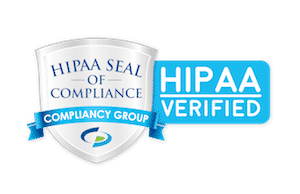Choosing a healthcare provider is no simple task, and before making a decision about a physician, 77% of patients turn to online reviews. They go through search results, analyze healthcare providers, and weigh the experiences of others before choosing a provider for themselves or their loved ones. This proves the immense role that online reviews play in not only influencing the choice of healthcare providers but also in shaping the overall reputation of any healthcare organization.
In a world where online reviews significantly impact various industries, the healthcare sector is unique. Patient expectations from healthcare providers are exceptionally high, and rightly so. Even when it comes to routine check-ups or elective procedures, what patients desire most is the peace of mind that their overall health is in capable hands.
It’s clear that patient feedback is a cornerstone in strengthening the reputation and expansion of your healthcare organization. With such high stakes, how can you ensure that you’re asking for patient reviews effectively and appropriately?
There’s no straightforward answer to this question as the process of asking for patient reviews has its unique challenges and pitfalls. Here, the approach to collecting patient feedback is as critical as the feedback itself, and understanding the common mistakes can be as informative as knowing the best practices.
Common Pitfalls in Asking for Patient Reviews
An ill-planned strategy for asking for patient reviews can do more harm than good, not only by being ineffective but also by potentially damaging the relationship with your patients. Here are some of the commonly employed methods for collecting patient feedback that aren’t as effective as you would think, and could even potentially turn your patients away:
Verbal Requests
While personal, face-to-face interaction often seems like a reliable approach, it can actually be counterproductive when it comes to asking for patient reviews. Physicians are there to focus on patient care and may feel frustrated or even degraded by asking patients to provide reviews. Not to mention that it’s a risky strategy to rely on patients’ memory to provide feedback later on. Just as we tend to forget our shopping list unless we write it down, a verbal request for a review can easily slip a patient’s mind in the middle of their other day-to-day responsibilities.
Signs and Posters in the Office
They say that a potential customer must see a message at least 7 times before they’ll be provoked to take action, so using signs and posters on the wall when asking for patient reviews is about as effective as the previous approach. Patients would need to notice, read, and recall the message from the sign multiple times to consider leaving a review. Unfortunately, these reminders often fade into the background and are forgotten once the patient steps out of your healthcare organization.
Cards
Cards might seem like an effective way when asking for patient reviews, but the reality is that they often involve too much effort for the patient. Typing in a long, complex URL, remembering to do so later, and then disposing of the card itself adds a lot of unnecessary work. Let’s not forget that convenience is key for today’s patients, so this approach would more likely lead to disappointing results instead of an increase in reviews.
Tablets and iPads in the Lobby
At first glance, having tablets and iPads in the lobby for patients to leave reviews might seem like a quick and simple method, allowing them to provide feedback while the visit is still fresh in their minds. However, this approach also has significant drawbacks.
One major issue when asking for patient reviews this way is that tablets and iPads require patients to log into their personal accounts, which can feel like a hassle for most people, especially after a medical exam. Additionally, they may not always remember to log out, risking exposure of confidential information protected by the Health Insurance Portability and Accountability Act (HIPAA). However, the biggest challenge stems from the way review platforms handle multiple reviews from the same IP address. For example, Google frequently rejects multiple reviews from the same address, meaning that many of those reviews won’t make it onto your practice’s pages.
Asking for Patient Reviews the Right Way
When it comes to replacing common mistakes when asking for patient reviews with an effective review collection, the common thread tying all the strategies together is convenience, security, and respect for the patient’s time and privacy.
In our digitally connected world, using digital platforms for review collection is a must and the best way to do this is through automated review requests sent to patients within 24 hours of receiving care.
Automated review requests sent via text or email allow patients to leave feedback at a time and place that suits them best. They don’t have to remember any verbal requests or find a specific card — a notification arrives directly on their device. Also, including direct, clickable links to preferred review platforms can make the process even more accessible and user-friendly. If the steps are too complicated or time-consuming, patients may abandon the process halfway, resulting in a missed opportunity for you to capture their experience.
An automated review system is designed to adhere to the highest security standards, ensuring the protection of patients’ personal information. By providing a secure platform for patients to share their experiences, you reduce the risk of data breaches or unauthorized access to sensitive information. On top of that, this process respects their privacy as the request comes privately through a text or an email, as opposed to being asked in person in a potentially crowded space.
In addition to this, the process of collecting patient feedback this way can be improved with some of the more traditional methods. Doctors and healthcare providers are the closest to the patients, and their words carry immense weight. A simple heads-up about an impending review request can establish the right expectations, making patients more receptive to digital prompts. While relying solely on verbal requests can be risky because day-to-day responsibilities can make patients forget these interactions, combining them with automated reminders strengthens their impact.
Moreover, visual reminders like signs and posters in healthcare settings can further improve the context set by verbal requests. They say that a potential customer must see a message at least 7 times before they’ll be provoked to take action, but in the context of healthcare, even if patients don’t act immediately upon seeing a sign or poster, it subtly reinforces the idea of leaving feedback. Consistent visual exposure, combined with a verbal request from their provider, can make patients more likely to recognize and engage with digital review prompts when they arrive. So, visual reminders don’t just act in isolation — they augment the entire review collection process.
Maximize Outcomes when Asking for Patient Reviews
Navigating the challenges of asking for patient reviews can indeed be a complex process, but its importance in the healthcare industry can’t be overstated. When used appropriately, online reviews can substantially influence your reputation, reach, and overall quality of care provided.
While some traditional techniques might seem intuitive, they often don’t lead to the desired results and can even jeopardize patient privacy and trust. On the other hand, by prioritizing patient-centric practices, you can not only improve the quantity and quality of your reviews but also enhance your relationship with your patients. This ultimately fosters stronger patient loyalty and satisfaction.
Embracing the power of digital, automated systems can transform the process of asking for patient reviews and SocialClimb offers a comprehensive reputation management solution designed for the healthcare sector. Our system streamlines the review collection process, making it easier and more convenient for your patients to provide feedback. At the same time, the automation of review requests reduces the burden on your staff and ensures that each patient is prompted to share their experience, so no opportunity for valuable feedback is missed.
In addition to this, SocialClimb goes beyond simply collecting reviews. It provides robust analytics and insights that help you understand your patients’ needs better, allowing you to make informed improvements to your services and patient care. In other words, not only do you simplify the process of asking for patient reviews, but you also get the tools to turn feedback into actionable insights that drive growth and improve patient satisfaction.











